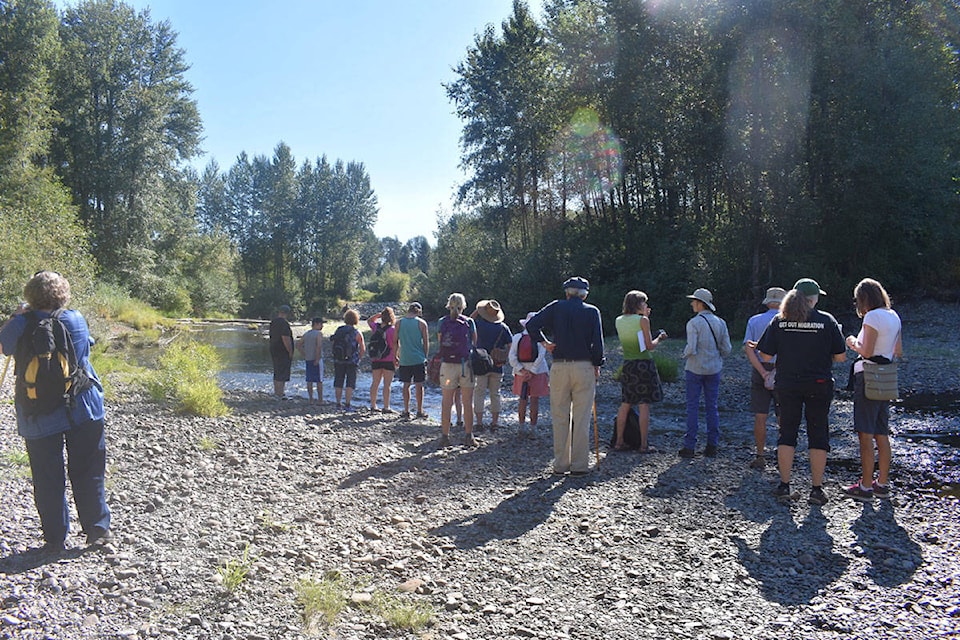With the continuing hot and dry weather, water levels in the Tsolum River continue to drop and temperatures rise.
Hot and dry conditions can place more stress on aquatic life in the river, especially on salmonids such as Coho Salmon and Rainbow/Cutthroat trout.
The Tsolum River Restoration Society has had mortalities reported along the river; if you see any dead fish the organization would like to hear about it. Rearing fish prefer shallow stream margins or side channels, but they are more vulnerable to dropping water levels in these areas and may become stranded or separated from the main channel.
If isolated ponds completely dry up, the fish perish. While stranded fish may provide food for other predators that reside near the river, large-scale stranding can have an impact on the local population.
There are many agricultural, irrigation, and domestic water license holders on the river who have permits in place to remove ground or surface water from the Tsolum River.
We would like to urge water users to conserve water use so that there is enough flow for fish that need sufficient flows to survive.
The Tsolum River Restoration Society monitors total flow in the mid part of the watershed downstream of Dove Creek during the summer months to check whether we have reached a critical low flow in the river. In the meantime, we would like to ask water users to conserve if at all possible.
Coho Salmon spend at least one year in freshwater, mainly in smaller tributaries. Maintaining flows and keeping temperatures cool over the summer is extremely important for their survival. Landowners can do their part by maintaining tree buffers along the edges of streams and ditches, preserving wetlands and keeping livestock out the streams.
* * *
One of our regular spring activities is to monitor the out-migration of fish from the Tsolum River by using a rotary screw trap that intercepts the fish as they head down the river to the ocean.
This year we estimated more than 220,000 Pink fry, 32,000 Chum fry, 2,500 Coho smolts, 1,600 Coho fry, and 600 Steelhead/Rainbow. These numbers are conservative since the trap had to be temporarily pulled out of the river between April 7 to 17 due to high rains and flows, so fish out-migrating during that period were not counted.
This year we also set up counting fences in Portuguese Creek and Finlay Creek to help us understand to what degree these smaller streams contribute to overall watershed productivity. We counted 910 Coho smolts in Finlay Creek between April 23 and May 20th. Portuguese Creek had 2,712 Coho smolts, 224 Coho fry, and 40 Rainbow smolts. These high numbers indicate that these smaller tributaries provide very productive and important fish habitat. The fences were installed later than planned in both creeks due to high flows so actual numbers are likely higher than our monitoring indicates.
Remember the Tsolum River is closed to all fishing (including catch and release) while the salmon and trout stocks recover from over 40 years of acid mine drainage that leached from the abandoned copper mine near Mt. Washington into the Tsolum River.
The mine site cover that was installed in 2010 resulted in immediate improvements to water quality, but the fish populations have not recovered to a level that can sustain fishing. Please respect and join our efforts to restore fish stocks and help the river recover. Refer to the Freshwater Fishing Regulations for up to date information on other fishing opportunities in our area.
On Wednesday, Aug. 22, at 10 a.m., the TRRS is offering a guided public riverside walk along the Tsolum River. This easy, all ages walk will take you along the trails in the Comox Exhibition area, where you will learn about salmon habitat, riparian habitat and the history of the Tsolum River.
Meet at the curling rink at 10am. The walk is free to members of the TRRS (you can buy an annual membership on site for $10), $5 for individuals, or $15 for families. For more information on this walk, email Caroline Heim at trrs.educationoutreach@gmail.com.
